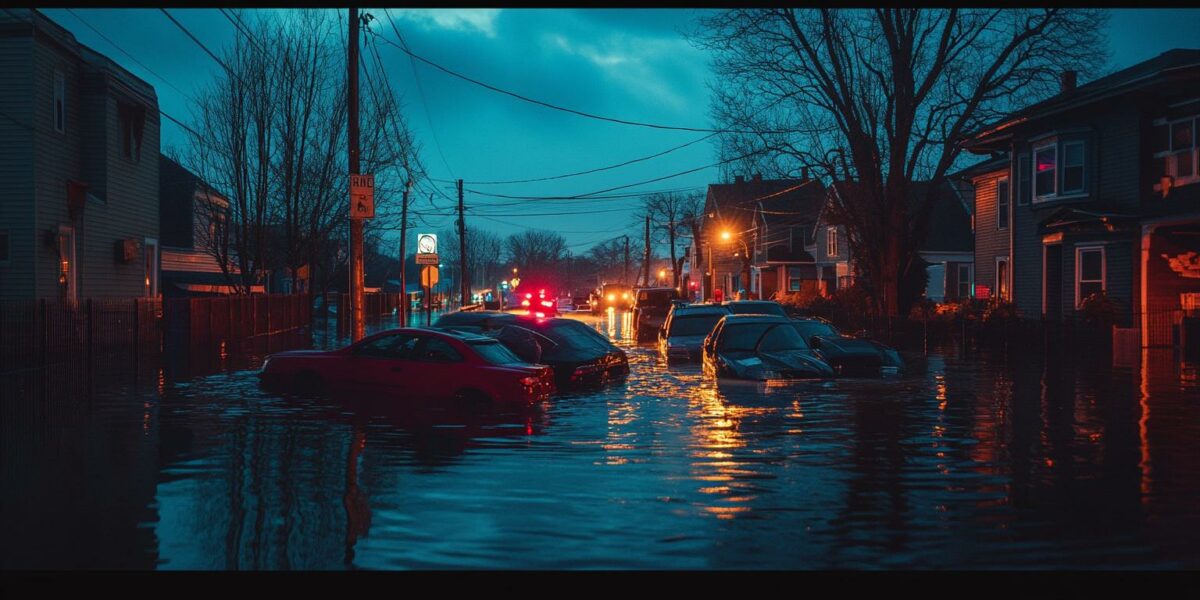Connecticut’s Battle Against Climate Extremes
Connecticut is determined to bolster its defenses as climate change intensifies the frequency and severity of weather events. This summer saw record heatwaves in June and July, followed by devastating floods in August, which tragically claimed three lives and caused extensive damage across southeastern regions.
The overwhelming deluge resulted in a federal disaster declaration, with roads, bridges, and homes severely impacted. The state Department of Energy and Environmental Protection (DEEP) is spearheading efforts to prepare communities for future challenges, emphasizing the urgent need for substantial investment in resilience measures.
Katie Dykes, DEEP commissioner, highlighted the importance of strategic planning and funding to tackle these growing climatic threats. The state’s Climate Resilience Fund (DCRF) is actively supporting towns in developing robust adaptation strategies, seeking both state and federal financial backing.
DEEP is reaching out to community members for input on utilizing state funds effectively to enhance resilience. The aim is to foster collaboration and ensure resources are allocated to areas most in need, aligning with the state’s adaptive goals.
Funding and Development Challenges
The initial phase of DCRF projects, launched last year, focuses on flood resilience and mitigating urban heat islands. These initiatives, although in early development stages, hold promise for future climate-proofing efforts.
However, infrastructure projects are often complex and time-consuming, requiring significant investment. Federal funding mandates local matching funds, posing challenges for many municipalities. DEEP’s new program aims to address these financial hurdles.
Key initiatives include:
- Funding resilience projects through the Resilience Roadmap.
- Establishing stormwater authorities in more towns.
- Encouraging local investment in infrastructure improvements.
John Truscinski of CIRCA stresses the importance of updating stormwater systems, originally designed for different climate assumptions. With rainfall extremes increasing, it’s vital to adapt infrastructure to withstand new realities.
Legislative Efforts and Future Prospects
Connecticut’s legislature is also playing a crucial role, having authorized a Climate Resiliency Revolving Loan Fund for 2024. This initiative aims to provide municipalities with low-interest loans for infrastructure repairs and resilience projects, marking a significant step forward.
Despite these advances, some legislative efforts met with obstacles. A bill focused on climate resilience didn’t reach a vote, and another seeking to curb greenhouse emissions wasn’t considered in the Senate.
The state continues to push for comprehensive climate legislation, underlining the necessity of preparing for extreme weather. Through collaborative efforts, Connecticut hopes to safeguard its communities against future climate challenges.
Engagement and feedback are encouraged, with DEEP accepting comments until November 8. Virtual meetings are scheduled to facilitate public participation, ensuring transparency and community involvement in shaping the state’s resilience strategy.
Engaging the Community in Resilience Building
As Connecticut confronts the realities of climate change, community engagement becomes paramount. DEEP’s outreach efforts are designed to gather insights and foster collaboration, ensuring that the state’s resilience initiatives align with local needs and priorities.
The public is encouraged to participate in virtual meetings, providing a platform for sharing ideas and concerns. These discussions will help shape the allocation of resources, ensuring that funds are directed towards the most impactful projects.
As the state navigates these challenges, fostering a sense of shared responsibility is key. By working together, communities can build a more resilient future, equipped to face the unpredictability of climate extremes.
Connecticut’s journey towards climate resilience is a testament to the power of collective action and innovative thinking. Through strategic investments and community collaboration, the state is poised to transform its approach to climate preparedness and adaptation.



Diego_Phoenixfire
Great initiative! Keep us posted on how these projects develop and the impact they have on the communities involved.
cooper
Can someone explain what a “stormwater authority” is? Sounds like something out of a superhero movie! 🤔
Paisley
This all sounds promising, but where exactly is the funding going to come from? Seems like a big task ahead.
serenity3
It’s about time we focus on climate resilience! Why didn’t the Senate consider the emission reduction bill though?
lucy
Thank you for addressing this critical issue. How can local residents get involved in the decision-making process?
Evan
Isn’t it a bit ironic that we need to invest so much to deal with the problems we created ourselves? 😅
Emilia
Wow, it’s great to see Connecticut taking such bold steps! 🌍 How can other states learn from their approach?